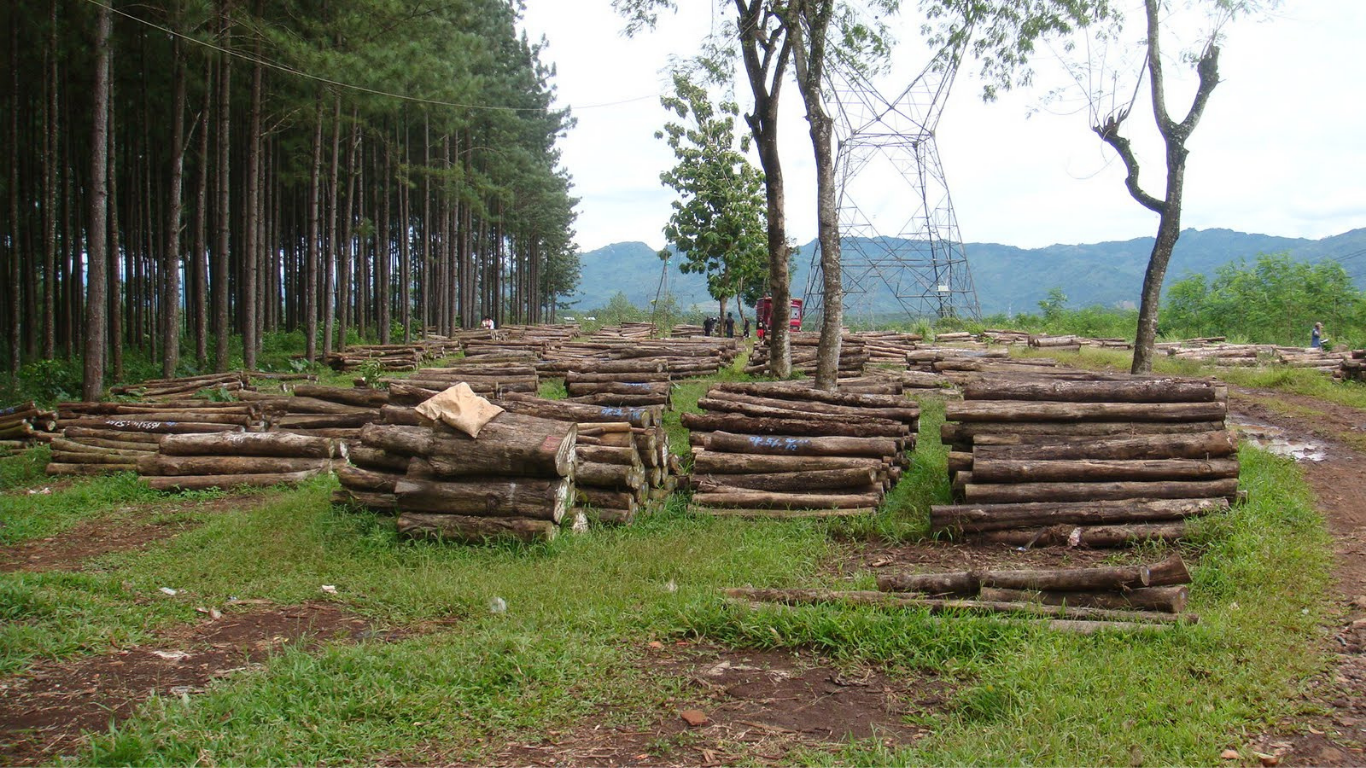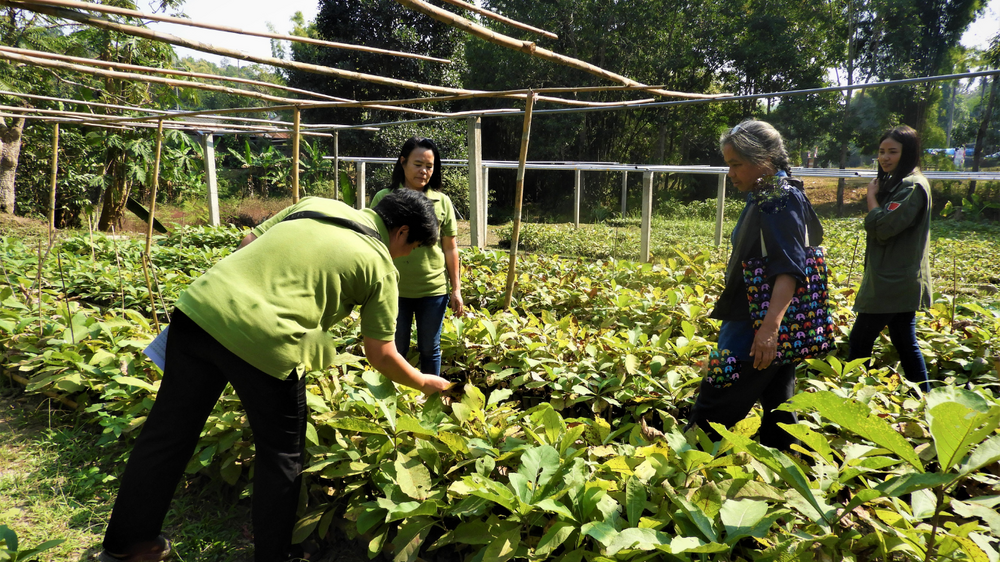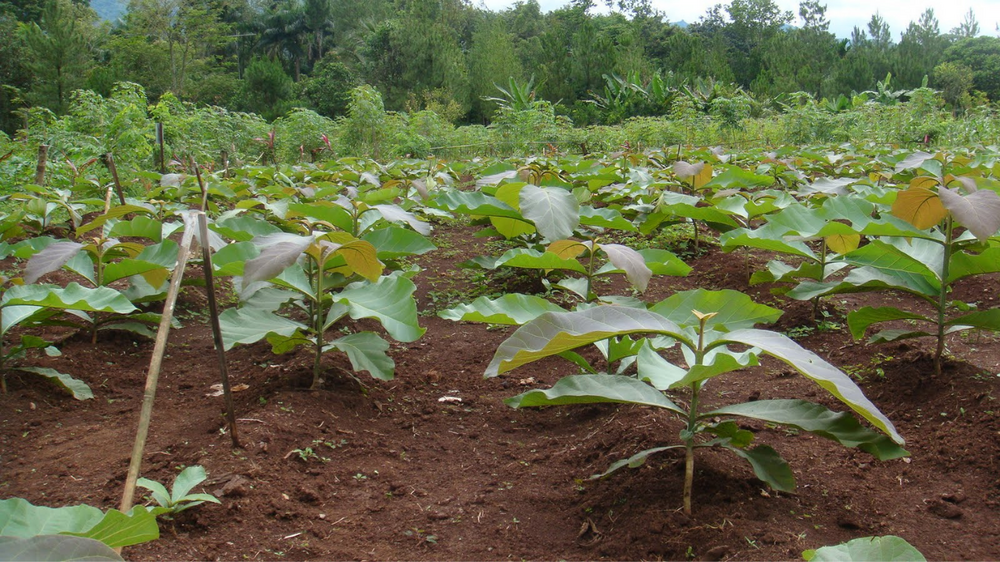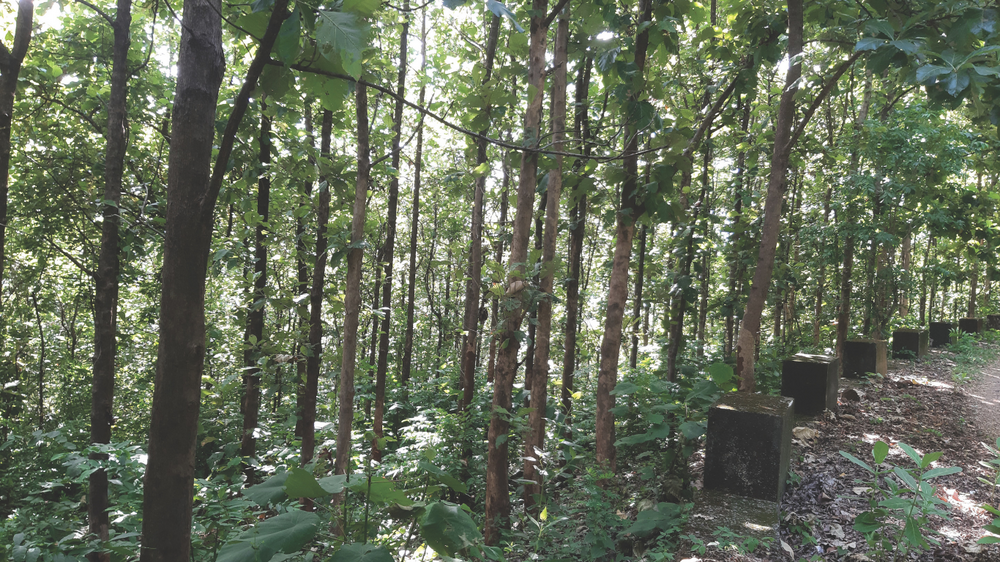Experts from Brazil and Indonesia discuss best silvicultural practices for quality teak production in ITTO webinar
02 September 2025, Yokohama

Teak logs sit in a yard in Indonesia waiting for further processing. © ITTO
When managed using silvicultural best practices, teak plantations can exemplify the benefits of sustainable forest management. Implementation of advanced silvicultural practices and genetic improvement is essential to producing high-quality, durable teak products while ensuring sustainable management of forest resources.
The latest installment of the ITTO-BMLEH webinar series explored innovation, technology, and wood quality improvement for sustainable teak production. The webinar was convened as part of an ITTO project aimed at promoting quality teak production for smallholders and community-based timber plantations.
This webinar held on 20 August 2025 welcomed two leading experts in the field of best practices for producing high-quality teak.
Mudji Susanto of the Research Centre for Applied Botany at the National Research and Innovation Agency in Indonesia, and Fausto Hissashi Takizawa from Brazil’s Teak Resources Company (TRC) discussed topics including the role of innovation, genetic improvement, and sustainable land management in positioning teak as a resource that can simultaneously meet global market demand and contribute to climate change mitigation, biodiversity conservation, and rural development.
Wood quality improvement of teak—insight from Indonesia
Indonesia has a long-established tradition of teak management, with programmes to improve production gradually ramping up since the late 1980s.
Dr Mudji presented the country’s advances in wood quality improvement for teak, discussing both conventional and molecular breeding techniques, including selection, progeny testing, clonal propagation, mutation breeding, and genome editing. He shared that these strategies aim to enhance wood quality, growth rates, and disease resistance while contributing to the management and restoration of teak forests and plantations.
Teak plays an important role for Indonesia from both an environmental and economic perspective with Dr Mudji emphasizing that, “teak forests can contribute to a healthy environment, especially when managed sustainably. Teak, especially in its native forests, (enable) carbon sequestration and storage.”
Additionally, Dr Mudji shared how the development and use of non-destructive methods for assessing wood density, stiffness, and durability have enabled more efficient breeding programmes and accelerated genetic gain, allowing for higher-quality teak production.
By combining scientific progress with community participation, Dr Mudji demonstrated how Indonesia’s example shows that plantation forestry can support both ecological resilience and rural livelihoods. Integrating agroforestry and silvicultural practices by smallholders demonstrates how teak cultivation can be harmonized with food security and sustainable development goals.
View from Brazil’s private sector: the importance of innovation
In his presentation, Mr Takizawa shared TRC’s experience as the world’s largest private teak producer, which manages over 40 000 hectares of teak plantations. He outlined how the company integrates technology, partnerships, and legal compliance to advance high-quality teak production.
Mr Takizawa echoed Dr Mudji’s recommendations on the use of genetic improvement and clonal silviculture technologies to enhance wood quality while adhering to standards for legal and sustainable supply chains. He reflected on the benefits of integrating the use of data in wood processing and decision-making such as land-use planning and management.
According to him, “the future of teak expansion relies on sustainability and innovation. By applying the best silvicultural practices, we generate long-term value for investors, producers, markets, and society.”
Mr Takizawa detailed how these priorities are reflected in a distinctive feature of TRC’s business model—a livestock-forest integration model which combines teak plantations with cattle ranching. Through partnerships with cattle ranchers, this approach creates silvopastoral systems that generate a shared income model. The scheme allows for the restoration of degraded pasture lands and diversifies income sources for local communities—a potential model for community-based landholders in other jurisdictions.
Compliance with strict international standards such as the requirements of the EU Deforestation Regulation and Forest Stewardship Council certification was also presented as an opportunity for producers to ensure credibility and market access while strengthening timber traceability.
As Mr Takizawa concluded, “smart teak forests (combined with) certification, technology, and social responsibility … ensures not only competitiveness but also resilience and long-term value creation for all stakeholders involved.”
Sharing best practices for innovation

Both speakers underscored the importance of using innovation and new technologies, particularly genetic improvement, to enable high-quality teak production.
“Innovation and technology are crucial drivers for the sustainability and competitiveness of tropical timber producers. Developments in clonal forestry, genomics and silviculture are key enablers of efficiency and supply chain transparency for smallholder and community-based cultivators of teak and other high-value species,” says ITTO Executive Director Sheam Satkuru. “Continued innovation, international collaboration, and commitment to legal and sustainable supply chains are essential to advancing a vision of teak production which has ecological, economic, and sociocultural benefits.”
The ITTO webinar series is a platform for international knowledge-sharing that provides support for smallholder and community forestry practitioners to improve livelihoods and social and environmental outcomes, particularly in the dissemination of best practices for improved planting material, technical training, and market access.
This ITTO project supporting smallholder and community forestry with improved teak production methods is implemented in partnership with Germany’s Ministry of Food, Agriculture and Regional Identity (BMLEH) across six countries in the Asia-Pacific and Africa - Cambodia, India, Indonesia, Thailand, Togo, and Viet Nam.
The webinar was the fourth in a series of 12 planned to create a collaborative learning platform among smallholders, forestry authorities, and academic partners in order to enhance the production of teak and other high-value timber species. Future webinars will discuss topics such as pest and disease control, fire management, certification, legality, and the role of carbon finance and other incentives.
Watch the full webinar:
